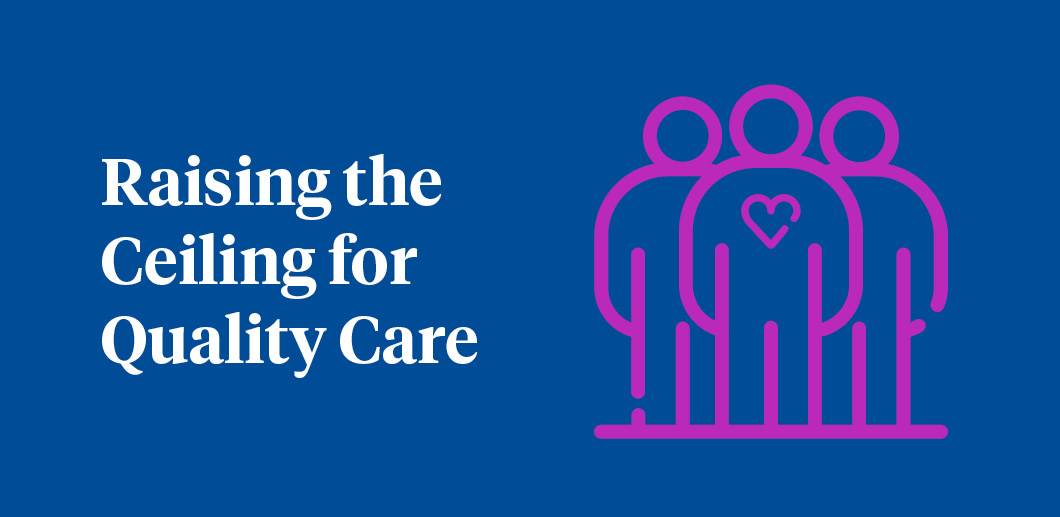In Ontario, people with a diagnosis of heavy menstrual bleeding living in the northeast are more than 10 times as likely to receive a hysterectomy as people living in Toronto. Similarly, people hospitalized with a hip fracture have a likelihood of dying within 30 days of admission that varies from three to 16 percent across the 50 highest volume hospitals in the province.
Even though health care in Ontario is generally excellent, these examples demonstrate that there are still instances where the quality of care people receive can vary depending on where they live. Some variation in care is always to be expected because of dif- ferences in patients’ underlying health conditions or in their treatment prefer- ences. But widespread, unwarranted regional variations in practices and outcomes can and should be addressed.
Almost three years ago, Health Quality Ontario (HQO) — soon to be part of Ontario Health — launched Quality Standards, an initiative to address this important issue head-on. It has been a major focus of work for the organization as these standards serve as a foundation for evidence- based quality improvement.
Nursing professionals play important roles in the development of each quality standard through their involvement in the standard’s Quality Standard Advisory Committee, providing feedback on the draft standards through the public comment process, or through other forums that HQO and its advisory committees set up to receive input. Nurses also play a key role in dissemination, and they support the adoption of the quality standards by presenting at conferences, leading workshops and developing content for nursing education programs.
Quality standards provide an outline for health care providers and patients regarding what high-quality care looks like for a specific condition. They focus on medical conditions or diseases where there are large variations in how care is delivered, or where there are gaps between the care provided and the care patients should receive. Quality standards are based on the best available evidence and are created by expert advisory committees comprised of patients or caregivers and healthcare professionals with experience in dealing with the relevant condition.
Since October 2016, HQO has released 20 quality standards with 14 more in development. Clinical topics are selected based on the degree and impact of variations in care and the ability of a standard to improve the quality of care. The quality standards can be used to help determine where resources are best used. Some standards such as three that deal with wound care have had extensive nursing input given their relevance to the nursing profession.
Patients deserve individualized care. And patients also deserve to be offered care that is consistent with the best available evidence. Quality stan- dards are not intended to replace pro- fessional standards of care, but rather to “raise the ceiling,” and drive up the quality of care across Ontario.
Quality standards are not clinical practice guidelines, which strive to give a detailed overview of a specific clinical topic. While quality standards draw on clinical practice guidelines as evidence sources, they target priority areas and provide clinicians with practical and actionable advice. Quality standards also put a strong emphasis on measure- ment and in supporting implementa- tion. They present an opportunity for clinicians and health care organizations to assess what they are currently doing that is working well, what they should stop doing and what they can do dif- ferently based on the quality standards.
Importantly, each quality standard includes a patient guide to help patients, their families and caregivers ask informed questions.
Do approaches to reducing unwanted variations in care work? An analysis conducted by The Economist’s Healthcare Intelligence Unit looked at studies that have tried to evaluate this question over the past six years.
It reported that 20 of the 34 studies identified found a significant improve- ment in the use of healthcare services through the use of evidence-based approaches such as quality standards, medical technologies or care-delivery system interventions.
Quorum, an online community that encourages and supports frontline health care providers’ efforts to improve quality of care, provides case studies where quality standards have already been effectively implemented in the province. For example, some of the first quality standards that dealt with mental health and Ontario Shores Centre for Mental Health Sciences has shown how integrating quality standards can result in significant improvements in care.
Earlier this year, HQO hosted a discus- sion on Twitter about the value of qual- ity standards and heard positive comments from health care providers and patients. A key takeaway was that the system should do more to promote quality standards and encourage their implementation. Nurses are encouraged to check out both current and future quality standards (www.hqontario.ca/Evidence-to- Improve-Care/Quality-Standards).
About Anna Greenberg
Anna Greenberg is Interim President and CEO of Health Quality Ontario.


